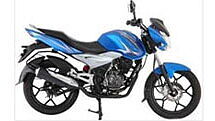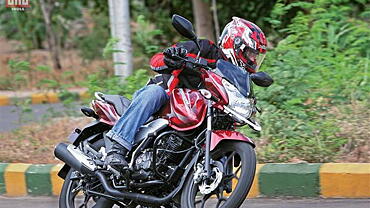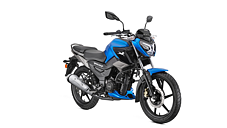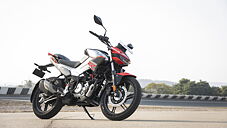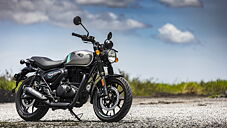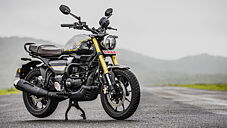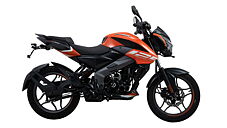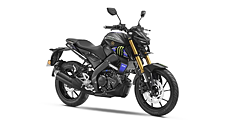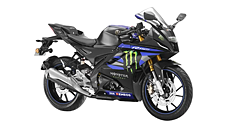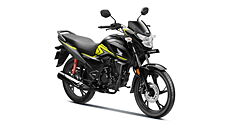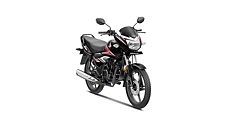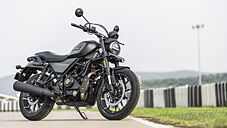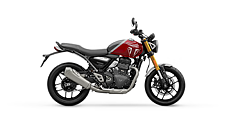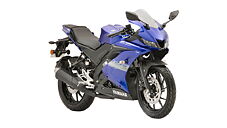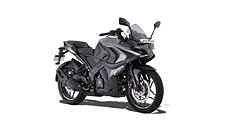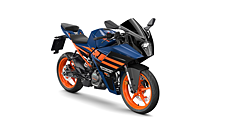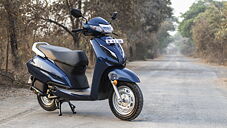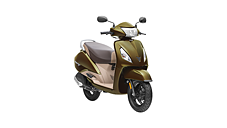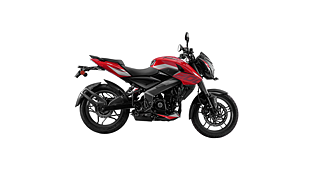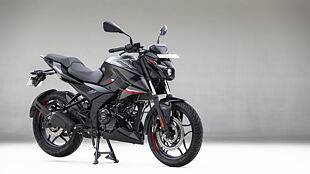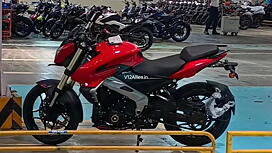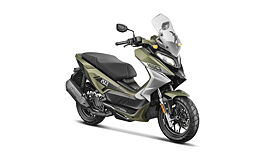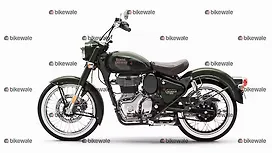Overview

That’s what the respective makers of the Discover 125ST, the CBF Stunner and the Phoenix would like you to believe. We find out if this is really true. And, if so, which is the best.
The message from the manufacturers is clear; these don’t want to be seen as your ordinary, commute-only 125cc motorcycles, but ones that are meant to inject some fun, some snob value and some uniqueness into daily commute. The Phoenix, says TVS, is one of the most premium 125cc bikes one can buy, thanks to the features it packs.
The Discover, according to Bajaj, is now a Sports Tourer, which is past ‘Chalta hai’ and is now in the ‘Dudta hai’ segment. And, the Honda, our current 125cc class champion, is meant for youngsters; it's here to take them to the gym and for dates, while commute it seems is just a by-product.
Whatever the marketing pitch for these bikes maybe; the fact remains these are commuters at the end of the day. So, besides being fun, these need to be easy and comfortable to ride too. Our plan then is to find out which of these make the best buy as an involving commute machine.
Exterior & Interior
The 4-valve, twin-spark engine (left) is a first for the segment and it packs good performance too. Another first is the rear monoshock (above), which is gas charged and adjustable for preload.
The Discover 125ST isn't short on features either but it doesn't get a digital display. It is however The engine is new and most refined in this test, but comes with a four-speed box. The rear suspension uses two springs with different ratings for better ride The switchgear design is the fanciest and its works well too (above). Also, the TVS is the only bike here to get digital instrumentation, but the digital speedo is difficult to read The Phoenix comes with a petal disc upfront, which offers great bite and with it the shortest stopping distance among the three. The front suspension, as is the norm in the class, is a telescopic fork setupbetter looking than the TVS. It looks more current and with stuff like LED tail lamps and a monoshock rear suspension, it radiates a more upmarket aura. However, it is the Stunner that's really the best looking bike in this segment. It has more road presence than the other two and it looks more edgy and a lot racier.
The Stunner too is a good looking motorcycle. The 2010 model has been upgraded and now sports a tachometer, bar end weights, O-ring sealed chain, under belly cowl, new body graphics and maintenance-free battery. But it's still not in the Pulsar's league. The Gladiator though looks dated. Not to mention it gets the least equipment.
It is also the only bike here to sport a tachometer. The instrumentation is all analogue, but is designed well. The Stunner also boasts of the best quality and finish among the three and the attention to detail, be the design of the various plastic parts or the packaging, is of a much higher level.
The Stunner switchgear is as comprehensive as the others, but the clocks offer more info.
The Stunner also impresses with its seating ergonomics, which is easily the most sorted in this bunch. It has a firm seat and with a slightly lower positioned but wide handlebar, and relatively rearset footpegs. It feels sporty and comfortable at the same time. It's also the best bike here to spend long hours in. What it could do with, though, is better ride. The ride is on the stiffer side and with just the rider onboard, things can get jumpy over poor roads.
The Phoenix comes with a petal disc upfront, which offers great bite and with it the shortest stopping distance among the three. The front suspension, as is the norm in the class, is a telescopic fork setup.
The Phoenix rides better, but only at lower speeds. With the speedo needle past 70kmph, the suspension struggles to cope with pronounced bumps. Plus, the soft seat and the very commuter like seating ergonomics — tall but closely placed handlebar, and the low and forward set footpegs — don't help things at speed either.
The Discover 125ST's ride isn't plush either, but it manages to iron out road irregularities better and with less vibrations than the Honda. But again, like the TVS, the ride does suffer at higher speeds. The seating though is more comfortable than the Phoenix with the handlebar further away and footpegs closer to the seat. But, overall, it's the Honda that emerges as the most comfortable commuter bike, the stiff ride notwithstanding.
The Honda is also the best handling bike of the three. The front-end grip and feel is much better and it also turns in with more confidence and higher stability. Even quick directions are easily dispatched and it brakes well too. But, the Honda isn't as quick as the Discover or as fuel efficient as the TVS. The 11bhp, 125cc single isn't the most refined either and along with the short-geared five speed box, one does end up riding it in its worst rpm zone — between 5000-6000rpm, most often.
Engine
DiscoverThe switchgear works well and the grips feel nice (above). Instrumentation is quite basic for what the bike promises.
The TVS' new EcoThrust engine is a lot smoother and even though it comes with a four speed box, the acceleration isn't way off the Honda. Both clock nearly the same time from 0-60kmph, but the Honda does begin pulling away as speeds rise taking over a second less to hit 80kmph compared to the TVS. But, the Phoenix's light clutch and beautifully balanced throttle response for less effort but good feel makes it quite handy for city riding.
Handling though isn't the bike's forte. It feels light at the front and the feel from the tyres or the chassis isn't enough to egg you on. Thankfully, the braking doesn't leave much to be desired. The feel at the lever is good and the bite impresses as well.
Stunner -The Honda's engine is a bit gruff and is mated to a short-geared five-speed box. The stiffly setup suspension makes for good handling, but the ride is poor.
However, if we had to pick a bike that balanced performance and dynamics, we'd take the Discover. It doesn't handle as well as the Stunner, but feels more planted than the TVS. Crucially, it is very quick. Its 0-60kmph time of 5.4 seconds rivals 150cc bikes.
Furthermore, it only takes 10.7 seconds to hit 80kmph, which is over a second quicker than the Stunner. It does top out at a little over 100kmph; identical to the Honda. Additionally, with nicely sorted gear ratios for the five-speed box, the ride-ability is the best in this bunch. The Discover is particularly quick in top gear, which makes for easy overtaking. We do wish the engine was more refined though. It sounds coarse. And, the vibes felt via the handlebar, seat and footpegs are most on the Bajaj. The ST also has the heaviest clutch, which can be a pain in stop and go traffic. However, the biggest chink in the ST's armour is its fuel economy; at under 50kmpl it is the worst in this test.
Dimension
Discover (mm) |
|
 |
|
Phoenix (mm) |
|
|
|
|
Stunner (mm) |
|
 |
|
Scorecard & Verdict
1) Honda CBF Stunner- Not the most efficient or quick, the Stunner delights with its fit and finish, attention to detail and dynamics. It's also surprisingly quite comfortable, a stiff ride notwithstanding.
2) Bajaj Discover 125ST- Brilliantly quick for a 125, the Discover is also easy to ride and looks modern. It has feel-good bits too like LED lamps. However, the ride and seating ergonomics could have been better.
3) TVS Phoenix- The Phoenix has sound mechanicals and superb fuel economy. Not to mention the longest range. But, it just isn't modern enough and needs work on its dynamics and seating.
Scorecard
Design: Given its sporty styling, its comprehensive instrumentation and the high levels of fit and finish for this class, the Stunner moves ahead of the other two under this head. The ergonomics and operability is class leading as well and it is also the most comfortable.
Performance: The Discover is very quick off the line and with a top speed of over 100kmph, makes for a fun bike. It scores the highest for ride-ability too, thanks to its gearing. The gearbox though isn't as good as the Stunner's.
Ride: Bajaj leads here as well courtesy the best throttle response and brake feel. The braking distance though is the highest thanks to the lack of grip from the tyres. The TVS though is the most fuel efficient bike in this test.
Dynamics: Given the Stunner's handling prowess, the feel from the chassis and the well-weighted steering, it was always going to top the class under this head. Additionally, it has great straightline stability and isn't too bad to manoeuvre either.
Cost: The Phoenix is the most affordable and the Discover, the most expensive. Plus, the Bajaj isn't as efficient as the others and is short on range too. The TVS tops this category and is the most cost effective 125cc to buy. Overall, however, as a package, the Honda still makes the most sensible buy.
Verdict
The 125ST is good, but not good enough to beat the Stunner. Ditto for the Phoenix. But TVS could have done more in terms of styling, dynamics and the feel-good factor. At least, the Bajaj has performance and stuff like a monoshock to interest the enthusiastic commuter. However, this test belongs to the superbly finished, well built and good looking Honda. The Stunner also scores higher for handling, comfort and overall wellness.
Gallery
1/11
Double Tap to Zoom



















![[object Object] ThumbNail Images [object Object] ThumbNail Images](https://imgd.aeplcdn.com/642x361/bikewaleimg/ec/251/img/l/Honda-CBF-Stunner-Exterior-613.jpg?v=201711021421&q=80)
